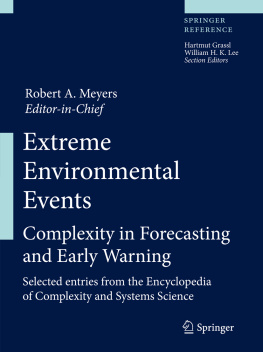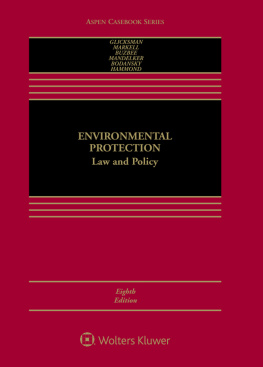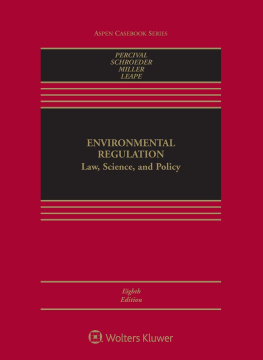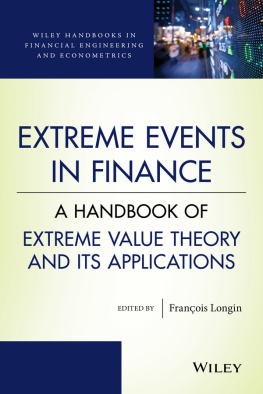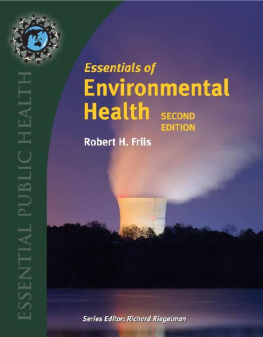Atmosphere
The atmosphere is involved in many processes of abrupt climate change, providing a strong nonlinearity in the climate system and propagating the influence of any climate forcing from one part of the globe to another. Atmospheric temperature, composition, humidity, cloudiness, and wind determine the Earth's energy fluxes. Wind affects the ocean's surface circulation and upwelling patterns. Atmospheric moisture transport determines the freshwater balance for the oceans, overall water circulation, and the dynamics of glaciers.
Oceans
Because water has enormous heat capacity, oceans typically store 10100 times more heat than equivalent land surfaces. The oceans exert a profound influence on climate through their ability to transport heat from one location to another. Changes in ocean circulation have been implicated in abrupt climate change of the past. Deglacial meltwater has freshened the North Atlantic and reduced the ability of the water to sink, inducing longterm coolings.
Land surface
The reflective capacity of the land can change greatly, with snow or ice sheets reflecting up to 90% of the sunlight while dense forests absorb more than 90%. Changes in surface characteristics can also affect solar heating, cloud formation, rainfall, and surfacewater flow to the oceans, thus feeding back strongly on climate.
Cryosphere
The portion of the Earth covered with ice and snow, the cryosphere, greatly affects temperature. When sea ice forms, it increases the planetary reflective capacity, thereby enhancing cooling. Sea ice also insulates the atmosphere from the relatively warm ocean, allowing winter air temperatures to steeply decline and reduce the supply of moisture to the atmosphere. Glaciers and snow cover on land can also provide abruptchange mechanisms. The water frozen in a glacier can melt if warmed sufficiently, leading to possibly rapid discharge, with consequent effects on sea level and ocean circulation. Meanwhile, snowcovered lands of all types maintain cold conditions because of their high reflectivity and because surface temperatures cannot rise above freezing until the snow completely melts.
External factors
Phenomena external to the climate system can also be agents of abrupt climate change. For example, the orbital parameters of the Earth vary over time, affecting the latitudinal distribution of solar energy. Furthermore, fluctuations in solar output, prompted by sunspot activity or the effects of solar wind, as well as volcanoes may cause climate fluctuations.
Climate time scales
The climate system is a composite system consisting of five major interactive components: the atmosphere, the hydrosphere, including the oceans, the cryosphere, the lithosphere, and the biosphere. All subsystems are open and nonisolated, as the atmosphere, hydrosphere, cryosphere and biosphere act as cascading systems linked by complex feedback processes. Climate refers to the average conditions in the Earth system that generally occur over periods of time, usually several decades or longer. This time scale is longer than the typical response time of the atmosphere. Parts of the other components of the Earth system (ice, ocean, continents) have much slower response times (decadal to millennial).
Climate variables and forcing
State variables are temperature, rainfall, wind, ocean currents, and many other variables in the Earth system. In our notation, the variables are described by a finite set of real variables in a vector . The climate system is subject to two main external forcings that condition its behavior, solar radiation and the action of gravity. Since has usually a spatial dependence, F is also a vector . Solar radiation must be regarded as the primary forcing mechanism, as it provides almost all the energy that drives the climate system. The whole climate system can be regarded as continuously evolving, as solar radiation changes on diurnal, seasonal and longer time scales, with parts of the system leading or lagging in time. Therefore, the subsystems of the climate system are not always in equilibrium with each other. Indeed, the climate system is a dissipative, highly nonlinear system, with many instabilities.
Climate models
are based on balances of energy, momentum, and mass, as well as radiation laws. There are several model categories, full circulation models, loworder models, and models of intermediate complexity. Climate models simulate the interactions of the atmosphere, oceans, land surface, and ice. They are used for a variety of purposes from study of the dynamics of the weather and climate system, past climate to projections of future climate.
Global climate models or General circulation models
(GCMs) The balances of energy, momentum, and mass are formulated in the framework of fluid dynamics on the rotating Earth. GCMs discretize the equations for fluid motion and energy transfer and integrate these forward in time. They also contain parametrization for processes such as convection that occur on scales too small to be resolved directly. The dimension of the state vector is in the order of depending on the resolution and complexity of the model.
Model categories
In addition to complex numerical climate models, it can be of great utility to reduce the system to loworder, box, and conceptual models. This complementary approach has been successfully applied to a number of questions regarding feedback mechanisms and the basic dynamical behavior, e.g. [].
Earthsystem models of intermediate complexity
(EMICs) Depending on the nature of questions asked and the pertinent time scales, different types of models are used. There are, on the one extreme, conceptual models, and, on the other extreme, comprehensive models (GCMs) operating at a high spatial and temporal resolution. Models of intermediate complexity bridge the gap []. Improvements in the development of coupled models of intermediate complexity have led to a situation where modeling a glacial cycle, even with prognostic atmospheric CO2 is becoming possible.
Climate simulation
A climate simulation is the output of a computer program that attempts to simulate the climate evolution under appropriate boundary conditions. Simulations have become a useful part of climate science to gain insight into the sensitivity of the system.
Climate variability pattern
Climate variability is defined as changes in integral properties of the climate system. True understanding of climate dynamics and prediction of future changes will come only with an understanding of the Earth system as a whole, and over past and present climate. Such understanding requires identification of the patterns of climate variability and their relationships to known forcing. Examples for climate variability patterns are the North Atlantic Oscillation (NAO) or the El NioSouthern Oscillation (ENSO).
Abrupt climate change
One can define abrupt climate change in the time and frequency domain. (a) Time domain: Abrupt climate change refers to a large shift in climate that persists for years or longer, such as marked changes in average temperature, or altered patterns of storms, floods, or droughts, over a widespread area that takes place so rapidly that the natural system has difficulty adapting to it. In the context of past abrupt climate change, rapidly typically means on the order of a decade. (b) Frequency domain: An abrupt change means that the characteristic periodicity changes. Also the phase relation between certain climate variables may change in a relatively short time. For both types of changes examples will be provided.

